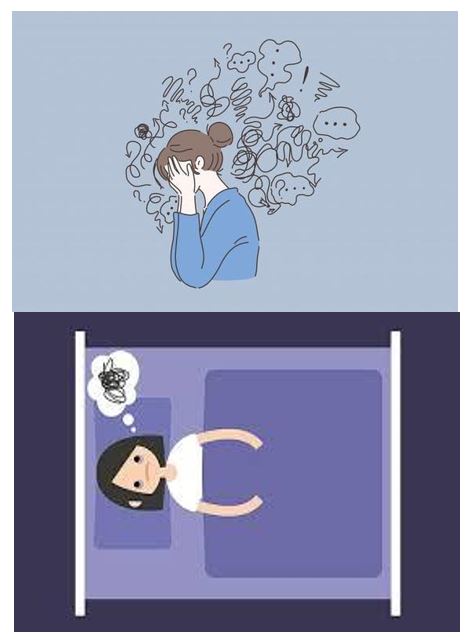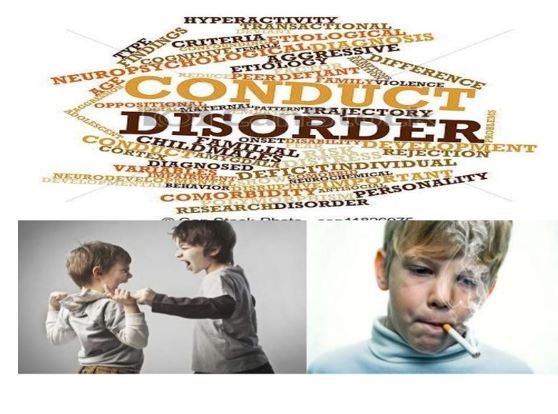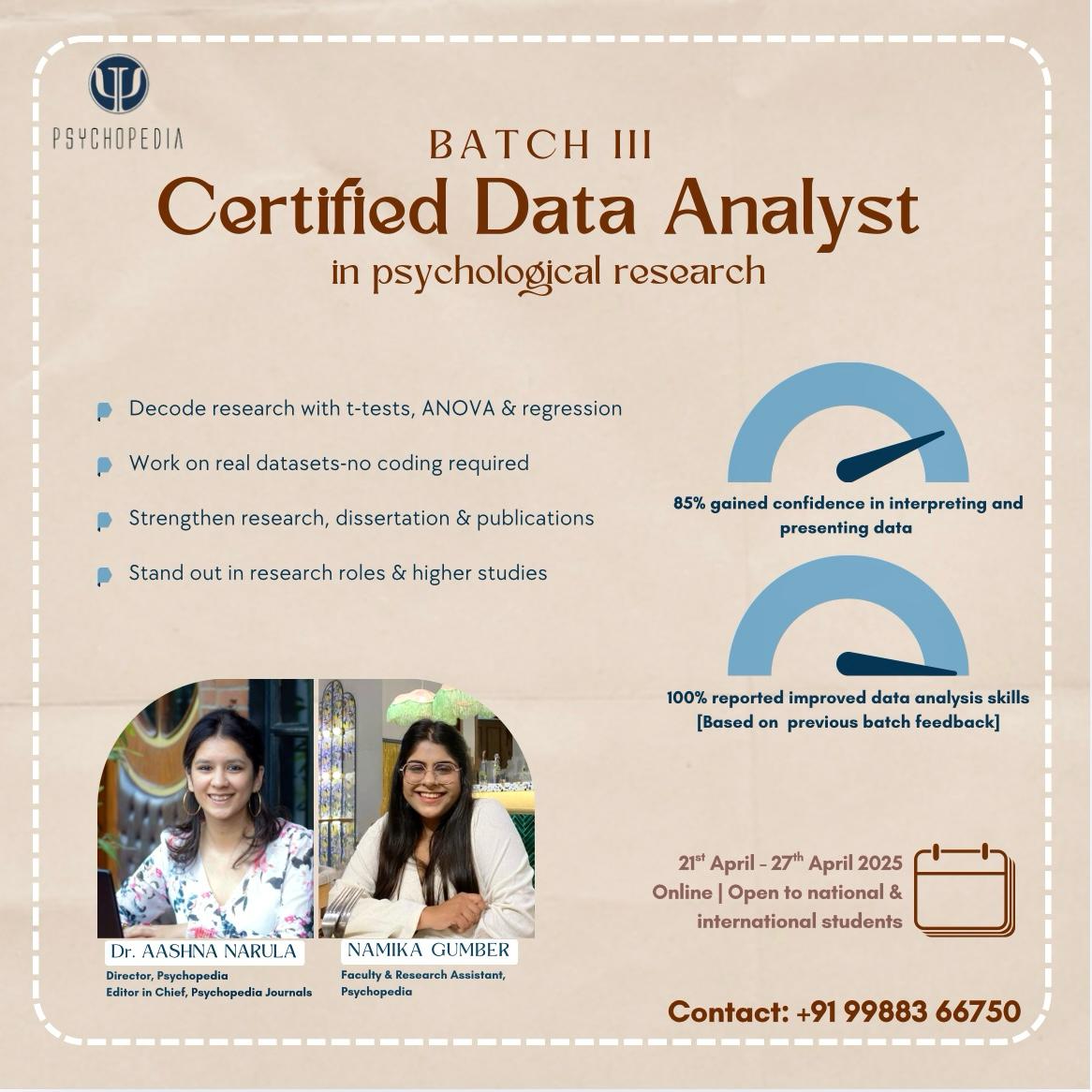By- Sakshi Sharma, B.A., Department of Psychology
Childhood mental and development disorders encompass Emotional, behavioral and Neurodevelopmental disorders and they are often diagnosed when a child is of school age. These disorders have very broad and adverse impacts on psychological and social well-being of the children and if not taken seriously it can continue to the adult age. With an increased demand for care and disability services and an increased risk of interaction with law enforcement authorities, these children are more likely to experience an impaired developmental trajectory. Children with these disorders need significant care from their families and caregivers. Children’s mental disorders are defined as drastic changes in the way children normally learn, act, or control their emotions, causing anxiety and trouble getting through the day. Occasionally, many children feel worries and concerns or exhibit destructive behaviors. If symptoms are severe and recurrent and interfere with activities in school, home or play, the child may be diagnosed.
Although not a complete list of all childhood mental illnesses, some of the main categories of disorders listed in the Mental Disorders Diagnostic and Statistical Manual (DSM) are included in this article.
1. Anxiety and Depression
 Anxiety and depression among children includes:
Anxiety and depression among children includes:
Anxiety Disorder of Children
Anxiety disorder is characterized by unpleasant emotion, unrealistic, irrational fears or anxiety and cognition which causes significant distress and impairments in functioning. It has cognitive/subjective, physiological and behavioral components. Anxiety at the cognitive/subjective level includes depressive mood, uncertainty about potential future risks or dangers, consciousness and a feeling of being unable to control or control future threats if they arise. At a physiological level, anxiety creates a state of tension and over arousal and at a behavioral level, anxiety can create a strong tendency to avoid situations.
Most children are vulnerable to fear, uncertainty and anxiety. Anxiety disorders are most common among children and children may be diagnosed with an anxiety disorder if children do not outgrow the fears and concerns that are common in young children, or if there are too many fears and concerns that they interfere with school, home, or play activities. They occur at higher rates among girls (38%) than boys (26%).
Anxiety and fear can take a form of other anxiety disorders which are,
- Specific phobias- in this a child feels and exhibits intense fear of a particular person, place, object, place, activity or situation.
- Social phobia- it’s a feeling of intense fear of performing in front of people or social situations where the child feels embarrassed, humiliated.
- Separation anxiety disorder- a child becomes excessively anxious about getting separated from their major attachments such as, parents, loved ones or any object.
- Posttraumatic stress disorders- children with PTSD feel intense emotional and physical distress when exposed to situations that remind them of the traumatic event. Some may relive the traumatic event over and over again.
The symptoms of anxiety disorders include:
- Dizziness
- Difficulty sleeping
- Muscle tightness
- Unable to be calm or hold still
- Dry mouth
- Feelings of nervousness, worry, panic, fear, and unease
- Rapid or irregular heartbeat
- Nausea
- Tingling or numbness in the hands or feet
- Sweaty or cold hands and/or feet
Childhood Depression and bipolar disorder
Depression in childhood is distinct from the usual “blues” and daily feelings that develop when a child grows. While most people think of depression as an adult disorder but depression can be experienced by children and adolescence as well. Unfortunately, when parents don’t know they’re sad, many children with depression go untreated.
Depression in children occurs with high frequency approximately 12% of children meet criteria of severe depression with a higher rate in girls (16%) than boys (8%).
Symptoms of depression-
- Sadness
- Withdrawal
- Crying
- Poor sleep and appetite
- Thoughts of suicide or suicide attempts
- Loss of interest in making hobbies
- Difficulty concentrating
- Fatigue and low energy
- Increased sensitivity to rejection
When the child is diagnosed with depression, it is classified on it severity
- Mild
- Moderate
- Sever
-
Bipolar disorder –
bipolar disorder is also known as manic-depressive illness or bipolar affective disorder, children with this disorder experience severe mood and behavior changes which are extreme and represent major change from their usual mood and behavior.
Symptoms-
- Acting unusually silly or happy
- Having a short temper
- Hyperactivity
- Irritability
- Talking with rapid speech
- Trouble sleeping or needing less sleep
- Trouble concentrating
- Aggressive behaviour
- Depressed mood
- Lethargy
2. Disruptive, Impulse-Control, and Conduct disorder
Disruptive, impulse-control, and conduct disorders are characterized by disturbance in behavioural and emotional self-regulation. Engagement in disruptive and impulsive behaviour also referred to as “externalising behaviour”.
Two of the most common externalizing disorders are- oppositional defiant disorder and conduct disorder.
Oppositional defiant disorder
The oppositional defiant disorder is a type of a behavioral disorder. Children with ODD are defiant, and hostile toward peers, parents, teachers, and others. They affect others more than themselves. ODD encompasses patterns of anger, irritability, argumentative and vindictive. This disorder usually begins by the age of 8 years. It is more often diagnosed in boys (11%) than girls (9%).
Symptoms 
- Having frequent temper tantrums
- Arguing a lot with adults
- Disobeying rules
- Speaking harshly and unkindly
- Often having an angry attitude
- Seeking revenge or being vindictive
Conduct Disorder
Conduct disorder is an ongoing pattern of behavior which is marked by emotional and behavioral problems. CD is characterized by a persistent, repetitive violation of rules. Children with CD behave aggressively and are argumentative. Conduct disorder in children goes beyond bad behavior. CD is often present with lack of empathy it makes the child unable to see emotions of another person whom they are hurting. A child develops this disorder by 12 years. CD is more common in boys (12%) than girls (7%). To diagnose CD in a child, he/she must have at least 3 of 15 symptoms which are given by DSM criteria.
Statistical analyses revealed the presence of 5 common subtypes of CD which are:
- Rule violation
- Deceit/ theft
- Aggressive behavior
- Serve forms of subtype 1 and 2
- Combination of subtypes 1, 2, and 3
Symptoms
AGGRESSION TO PEOPLE AND ANIMALS
- Often bullies, threatens, or intimidates others
- Initiates physical fights
- Using weapons which is harmful to death
- Being cruel to people
- Cruel to animals
- Stealing
- Forcing someone sexually
DESTRUCTION OF PROPERTY
- Deliberate fire setting
- Destroying others property
DECEPTIVENESS OF THEFT
- Breaking others house, car, or building
- Lies to avoid obligations
- Stealing without confronting the victim
SERIOUS VIOLATION OF RULES
- Staying out late night before the age of 13 years
- Running away from home overnight at least twice
- Truancy beginning from school, before age 13 years
|
3. Neurodevelopmental disorder
Neurodevelopmental disorder is characterized by an early onset and persistent course which results in disruption to normal brain development. These disorders often delay the maturation of the brain. They are heterogeneous and often overlap and share common risk factors
Most common neurodevelopmental disorders are:
- Attention deficit hyperactivity disorder
- Autism spectrum disorder
- Specific learning disorder
Attention deficit hyperactivity disorder (ADHD)
It is characterized by inattention and/or impulsive behaviour of the children. Attention deficit hyperactivity disorder is among the most common neurobehavioral disorders presenting for treatment in children. ADHD is often associated with co-occurring disorders including disruptive, mood, anxiety, stress, impulsivity. Children with ADHD may find difficulty in focusing and prioritizing their work, leading to missed deadlines. The rate of ADHD is much higher in boys (13%) than girls (4%) and it is commonly comorbid with other externalising disorders like ODD and CD. ADHD is a lifelong disorder but its symptoms may change with time.
To diagnose ADHD in children they may have one of three types of symptoms:
- Predominantly inattentive: children with ADHD struggle to focus and do task. They may daydream and struggle to stay organised.
- Predominantly Hyperactive/impulsive: In this children may seem to be very active as well as impulsive and they cannot sit still.
- Combined: This symptom causes impairment in attention as well as hyperactivity.
Autism spectrum disorder (ASD)
Autism spectrum disorder (ASD) is a condition which affects two main areas of development of a child: the first is social communication and social interaction, and the second is restricted, repetitive activity and interest patterns. ASD is present in a child since birth but it is only diagnosed when social needs exceed the child’s limitations. Autism spectrum disorder encompasses disorders historically considered distinct, such as autism, Asperger’s syndrome, disintegrative childhood disorder, and an unidentified type of pervasive developmental disorder. The word “Asperger’s syndrome,” which is usually thought to be at the mild end of the autism spectrum disorder, is still used by some people.
Symptoms-
- No single word by 16 months
- No responses to their name
- Poor eye contact
- Loss of language or social skills
- No social responsiveness
- Stereotyped or repetitive motor moments
- Hyper or hyperactivity to sensory input
- Excessive lining up of toys or objects
Specific Learning Disorder
A specific learning disability is a disorder that interferes with a child’s ability to listen, think, speak, write, spell, or do problem solving. Children with learning disabilities typically have at least average intelligence, but are also unable to obtain academic skills required for their age, intellectual capacity, experience, and education. A learning disability is distinct from an intellectual development disorder. LD delays in cognitive development of a child.
Specific learning disorders includes several disorders like, Dyslexia, Dyscalculia, Dysgraphia
Dyslexia- it causes problems in reading, recognizing words, and reading comprehensions.
Dyscalculia- it affects a child’s ability to understand, learn, and perform math and numbers and problem solving. Their basic arithmetic skills are affected.
Dysgraphia- Dysgraphia is associated with the writing, translating ideas into language, organizing their thoughts using grammar, capital letters and Punctuation correctly.
They are different conditions with unique neurological and behavioral profiles. In these conditions the child’s left-hemisphere process is delayed as compared to other children who can learn and write. Children with dyslexia, dyscalculia and dysgraphia perform below their ability level, which can be messy. Their vocabulary and spelling skills can be poor as compared to normal children due to which they may avoid involving in any other activity especially those where reading and writing is involved. This can also develop lack of confidence and self-esteem.
|

